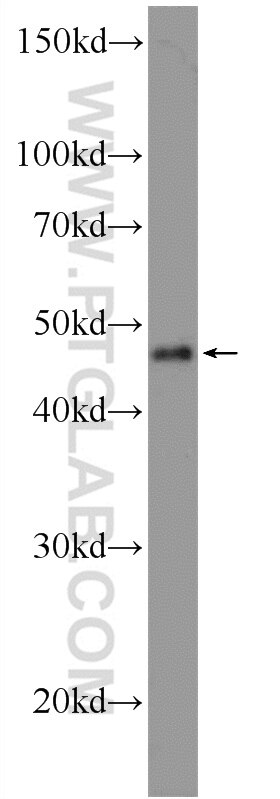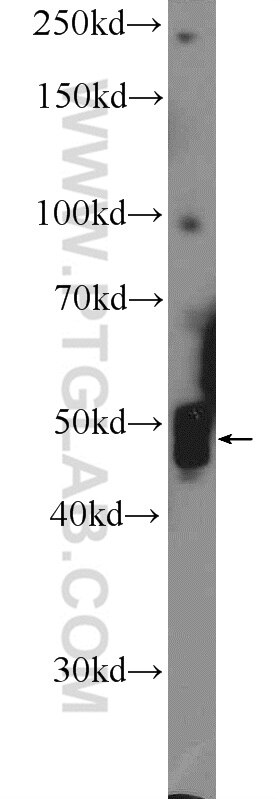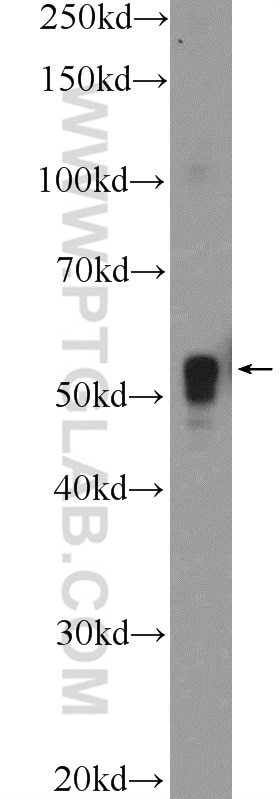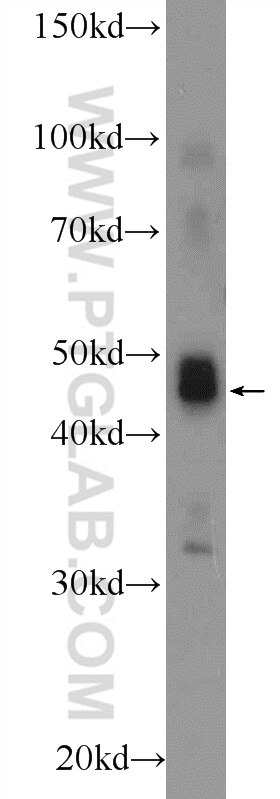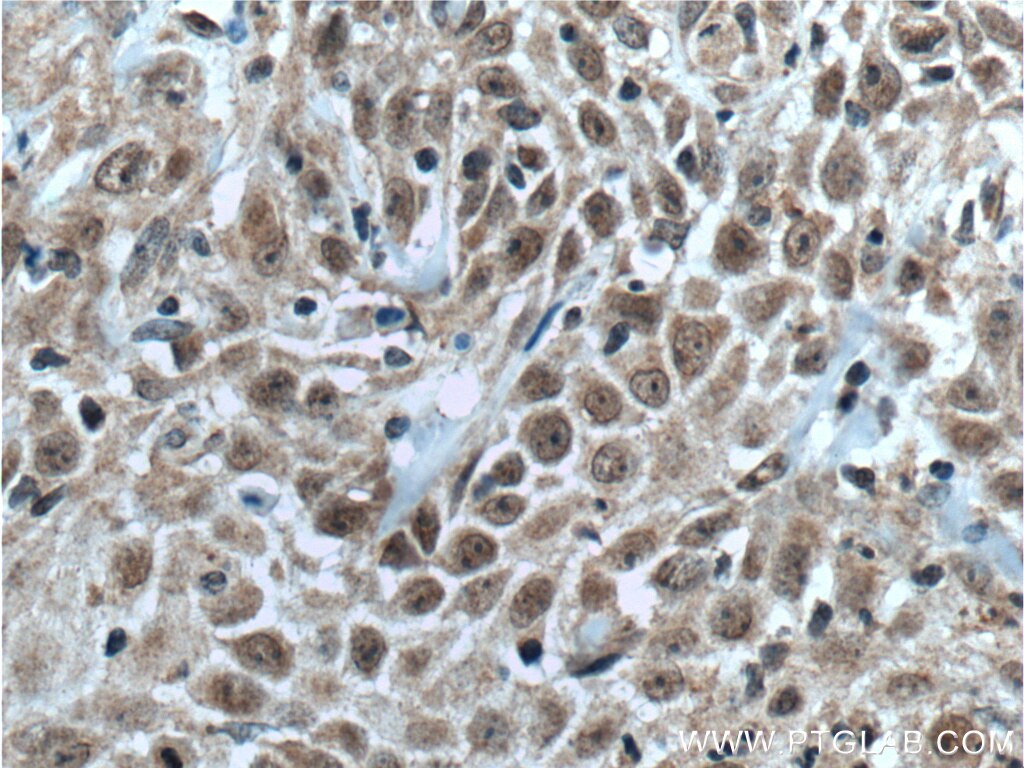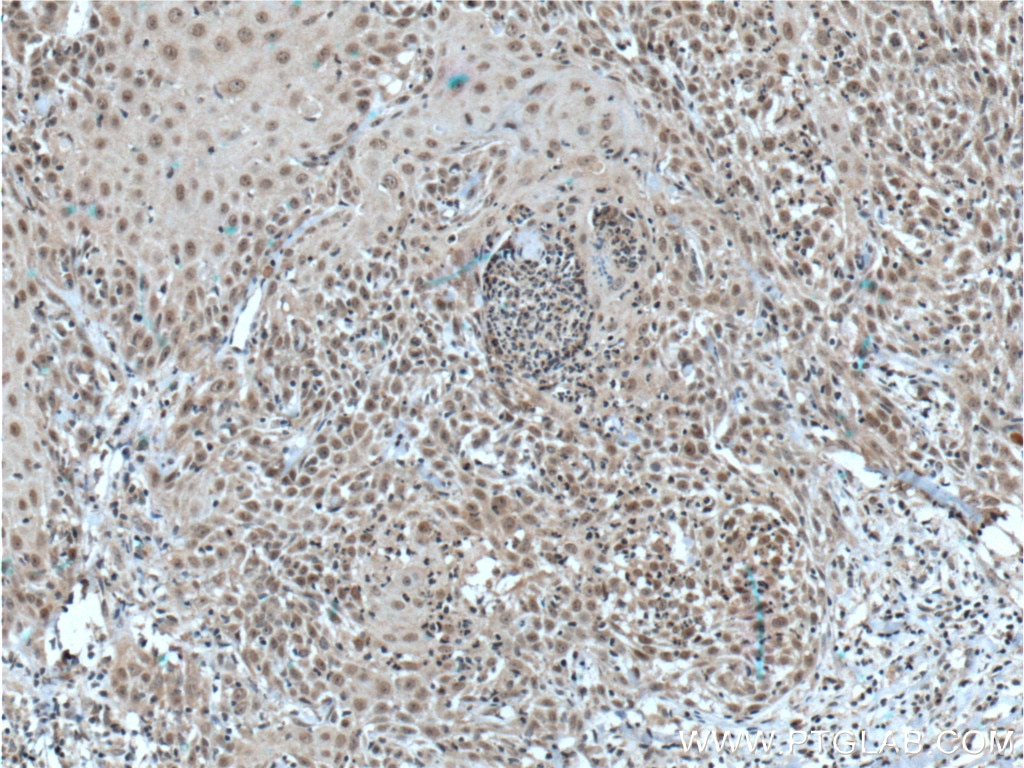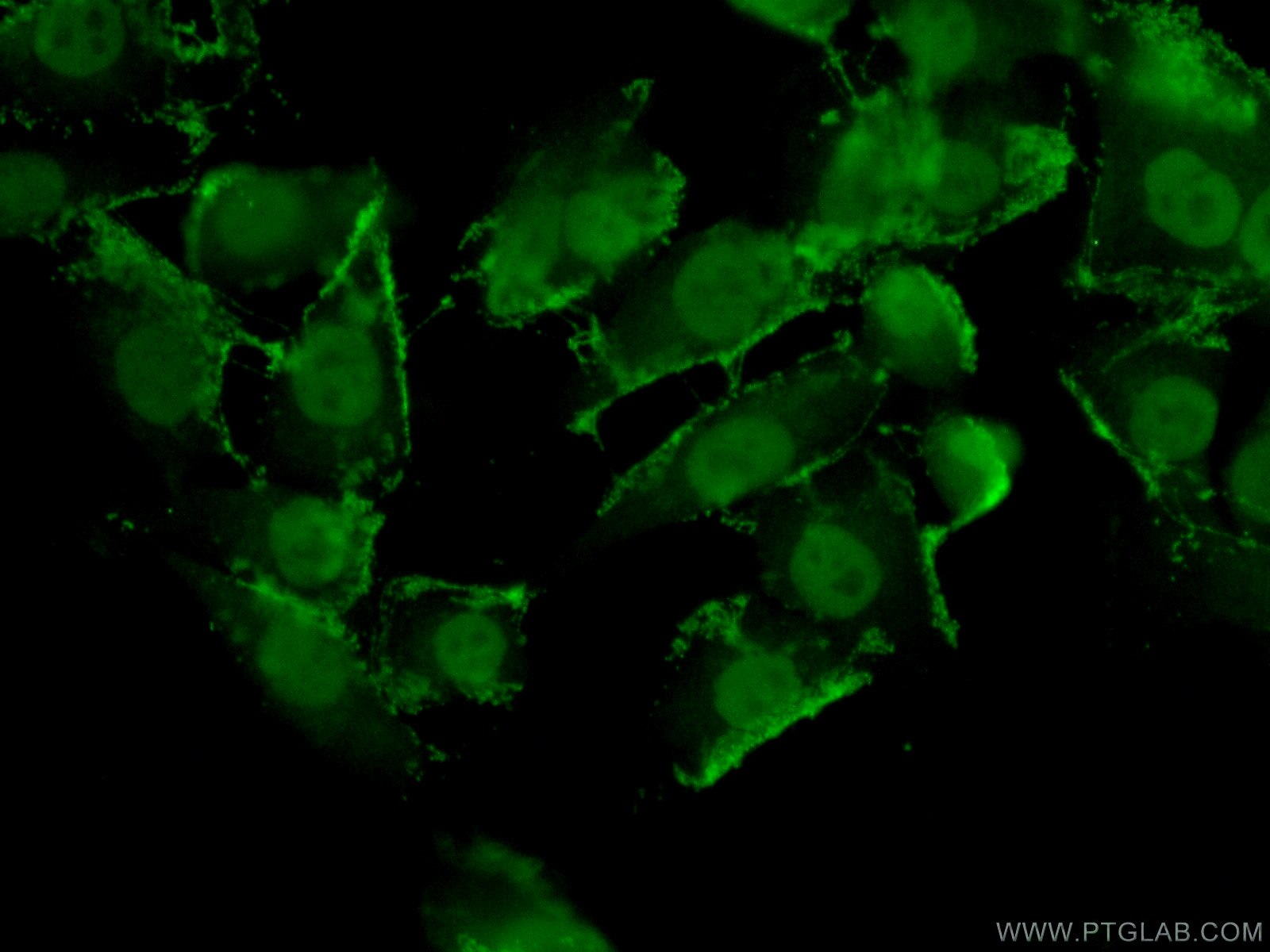TFAP2E Polyclonal antibody
TFAP2E Polyclonal Antibody for WB, IF, IHC, ELISA
Host / Isotype
Rabbit / IgG
Reactivity
human, mouse, rat
Applications
WB, IF, IHC, ELISA
Conjugate
Unconjugated
Cat no : 25829-1-AP
Synonyms
Validation Data Gallery
Tested Applications
| Positive WB detected in | A375 cells, mouse brain tissue, rat brain tissue |
| Positive IHC detected in | human skin cancer tissue Note: suggested antigen retrieval with TE buffer pH 9.0; (*) Alternatively, antigen retrieval may be performed with citrate buffer pH 6.0 |
| Positive IF detected in | A375 cells |
Recommended dilution
| Application | Dilution |
|---|---|
| Western Blot (WB) | WB : 1:500-1:1000 |
| Immunohistochemistry (IHC) | IHC : 1:50-1:500 |
| Immunofluorescence (IF) | IF : 1:50-1:500 |
| It is recommended that this reagent should be titrated in each testing system to obtain optimal results. | |
| Sample-dependent, Check data in validation data gallery. | |
Published Applications
| IF | See 1 publications below |
Product Information
The immunogen of 25829-1-AP is TFAP2E Fusion Protein expressed in E. coli.
| Tested Reactivity | human, mouse, rat |
| Cited Reactivity | mouse |
| Host / Isotype | Rabbit / IgG |
| Class | Polyclonal |
| Type | Antibody |
| Immunogen | TFAP2E fusion protein Ag23023 |
| Full Name | transcription factor AP-2 epsilon (activating enhancer binding protein 2 epsilon) |
| Calculated Molecular Weight | 442 aa, 46 kDa |
| Observed Molecular Weight | 46 kDa |
| GenBank Accession Number | BC041175 |
| Gene Symbol | TFAP2E |
| Gene ID (NCBI) | 339488 |
| RRID | AB_2880258 |
| Conjugate | Unconjugated |
| Form | Liquid |
| Purification Method | Antigen affinity purification |
| Storage Buffer | PBS with 0.02% sodium azide and 50% glycerol pH 7.3. |
| Storage Conditions | Store at -20°C. Stable for one year after shipment. Aliquoting is unnecessary for -20oC storage. 20ul sizes contain 0.1% BSA. |
Protocols
| Product Specific Protocols | |
|---|---|
| WB protocol for TFAP2E antibody 25829-1-AP | Download protocol |
| IHC protocol for TFAP2E antibody 25829-1-AP | Download protocol |
| IF protocol for TFAP2E antibody 25829-1-AP | Download protocol |
| Standard Protocols | |
|---|---|
| Click here to view our Standard Protocols |
Publications
| Species | Application | Title |
|---|---|---|
Elife Sociosexual behavior requires both activating and repressive roles of Tfap2e/AP-2ε in vomeronasal sensory neurons |
